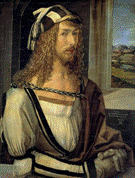Art, Art History and Design, School of

School of Art, Art History, and Design: Faculty Publications and Creative Activity
Document Type
Article
Date of this Version
Summer 2009
Citation
Published in Sixteenth Century Journal, vol. 40, no. 2 (Summer 2009), pp. 634-636.
Abstract
Isabella d'Este's activities as an art collector and patron are richly documented and have received a correspondingly large amount of art historical attention in the modern era. Yet Isabella--and the studiolo she had created and decorated in the Mantuan Palazzo Ducale--have gotten mixed reviews in this scholarship; the former has historically emerged as difficult, irrational, and acquisitive rather than discerning, while the paintings done for the latter by Andrea Mantegna, Perugino, Lorenzo Costa, and Correggio between 1497 and 1530 are often treated as curiosities-stilted in style and didactic in subject-within the larger scope of the artists' careers. The paintings have been understood as dictated by moralizing literary sources-as dry transcriptions of even dryer texts. In this version of history, Isabella is cast as "villain"-a patron neither intellectually sophisticated enough to get the best from her humanist advisors nor aesthetically savvy enough to get the best from her painters. Stephen J. Campbell's ambitious and commendable new book, The Cabinet of Eros, largely redeems both paintings and patron, through a mixture of broad contextualizationboth physical and cultural-and close reading, of images as well as of texts. Yet, as the ordering of subjects in the title suggests, the book's larger concern-and arguably most valuable accomplishment-is to recast our understanding of the Renaissance interest in myth itself. In a way, Campbell builds on the early twentieth-century work of Aby Warburg, who investigated the psychological dimensions of Renaissance fascination with pagan myth. For Campbell, Isabella's paintings are notable not simply as displays of erudition, but as mythic explorations of the psychic realities of an erudite Renaissance audience.


Comments
Copyright 2009 Sixteenth Century Journal. Used by permission.